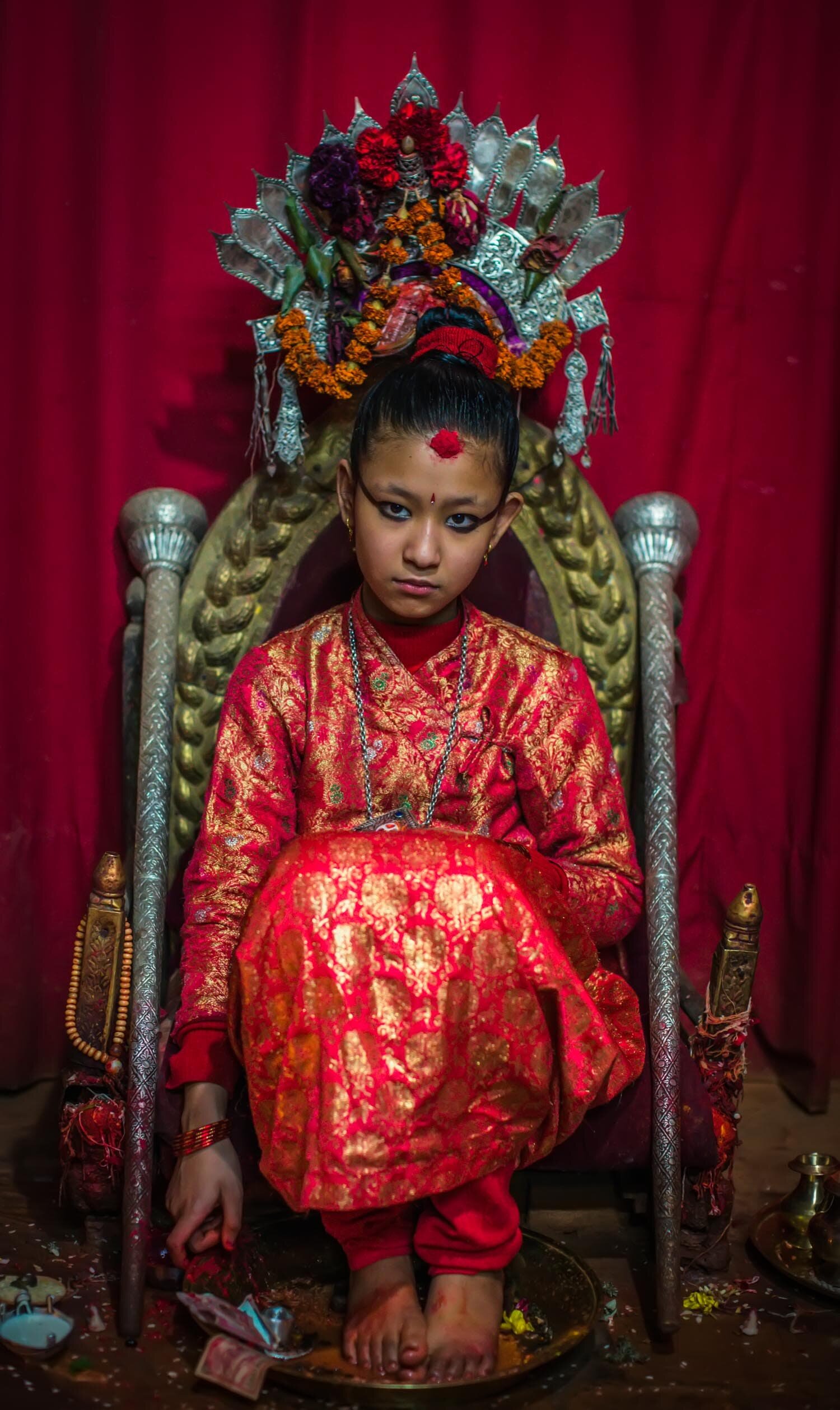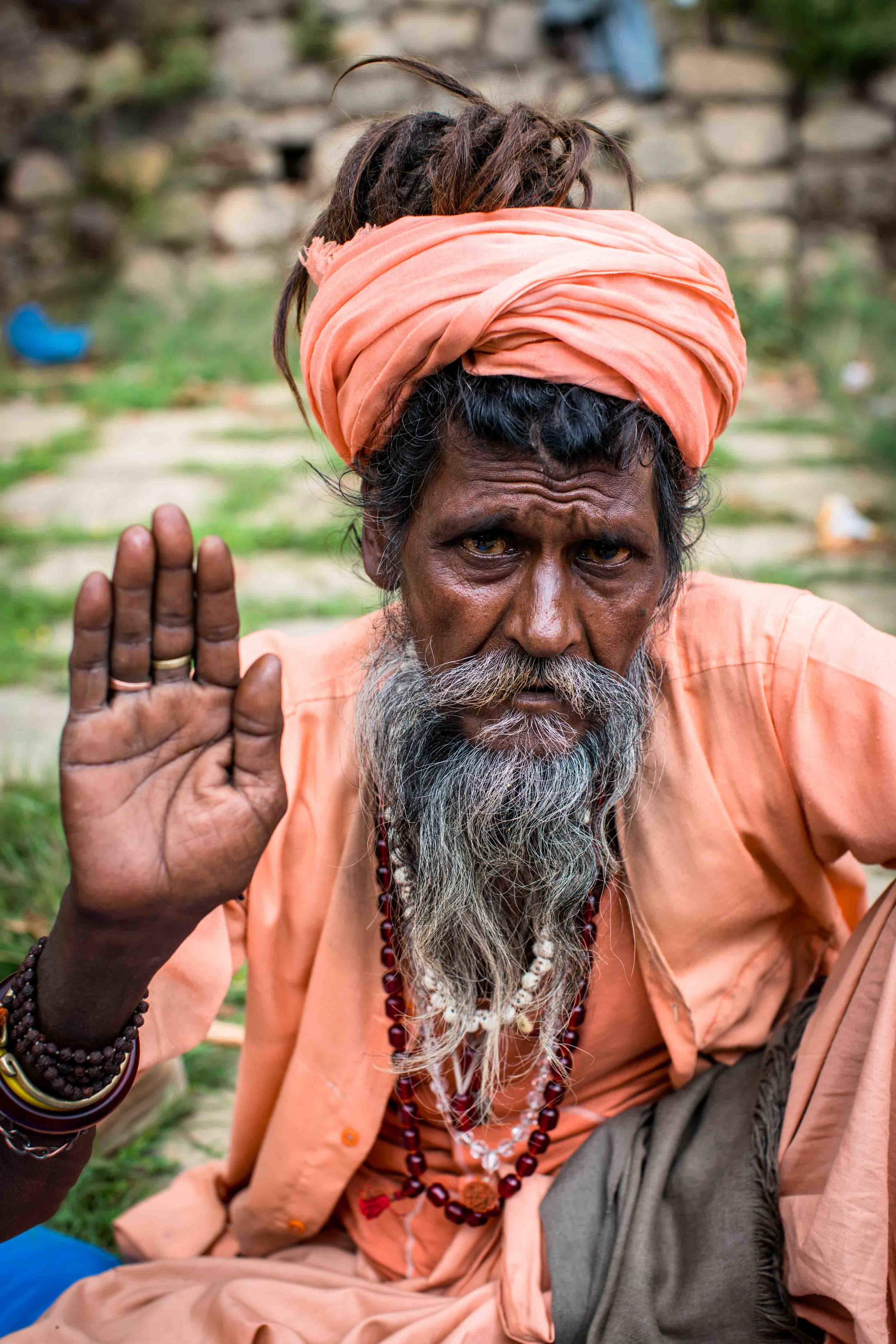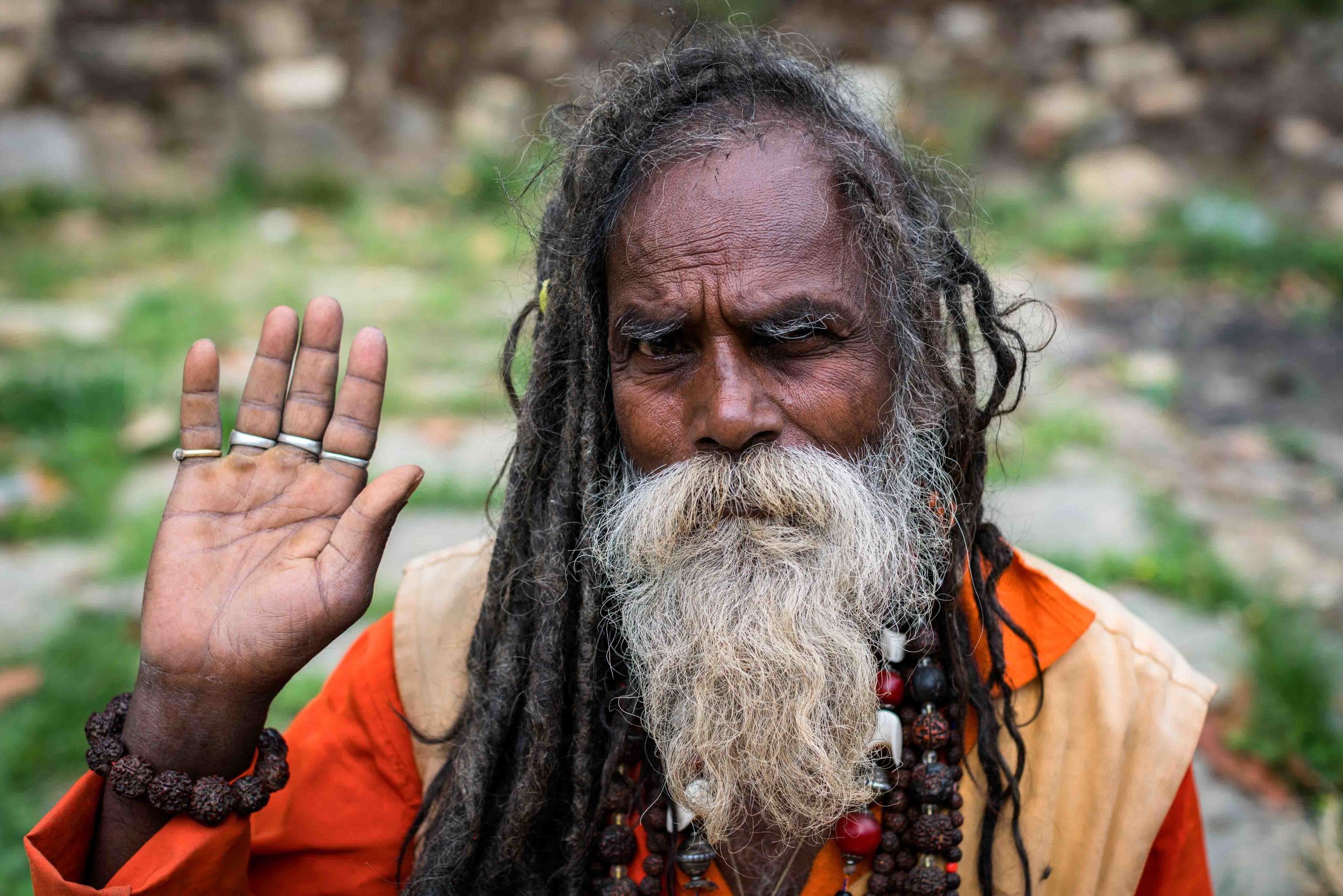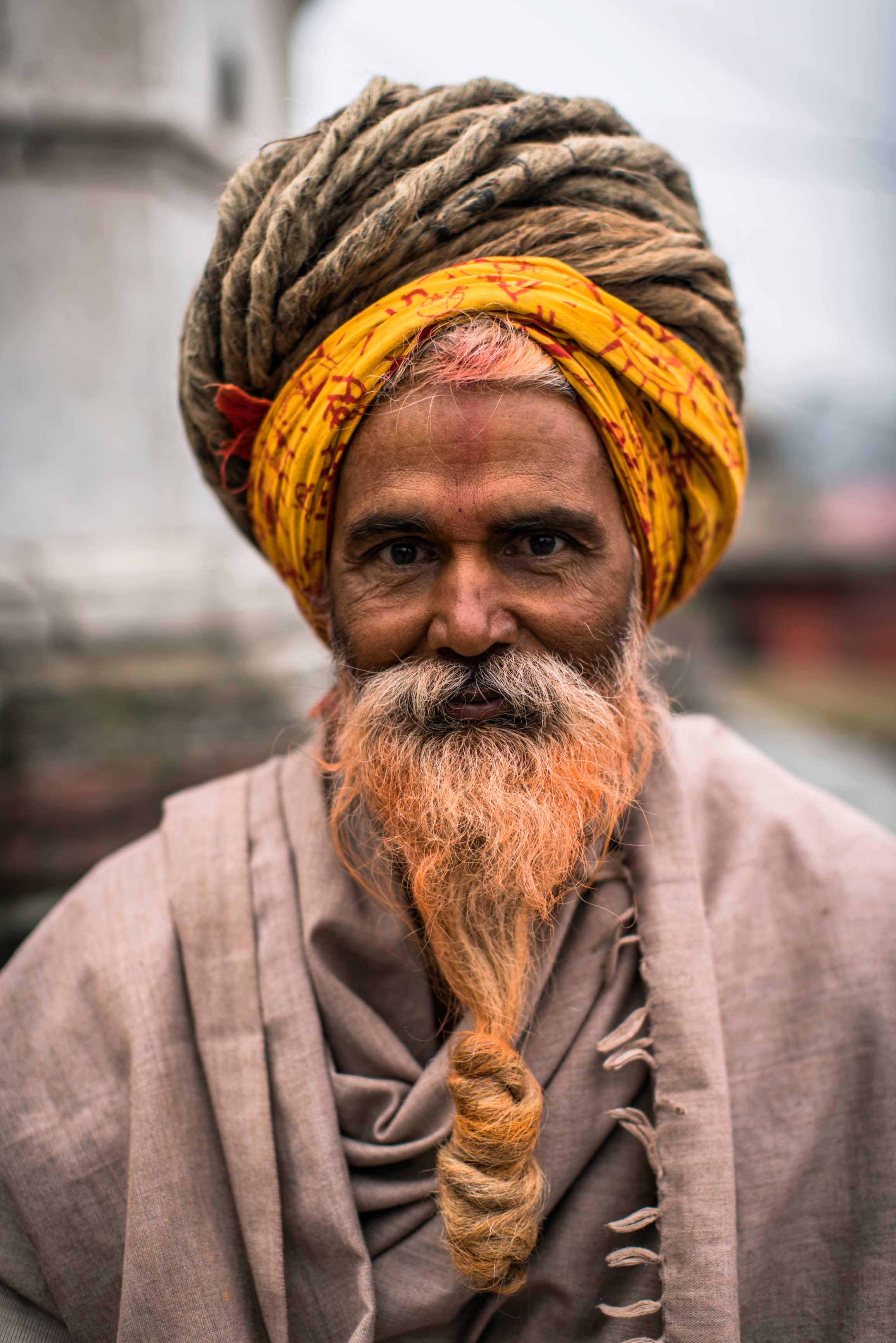The Royal Kumari Of Patan

How would your perception of the world change if your childhood consisted of being worshipped as a living Goddess? You grow up, never leaving your house. Your feet, never touch the ground. You are revered and worshipped. People come to you for your blessing. It is both a huge responsibility, and what many consider, the depravation of a normal childhood.
A Kumari is supposed to have all her wishes granted. That means, when the Kumari's friends come to play, they must defer to her choices in games. I wonder how well this goes over, in practice. Even the best of children can be a bit bratty at times.
Believed to be the reincarnation of the Goddess Taleju, a Kumari is not a lifelong Goddess. Rather, she is remains a Goddess only until her first menstruation, when it is believed the Goddess vacates the body. There are Kumaris in Kathmandu, Patan, and Bhaktapur.
This particular Kumari is Yumika Bajracharya of Patan. Installed in 2014, she is but a girl. With a quiet demeanor, I wonder what she must have thought of yet another white foreigner coming to see her. Was I disruption in her otherwise normal day? Did she think, perhaps there were other people she could have blessed? Or relieved that the tip will help with her schooling?
As I looked at her with the reverence of someone who is neither a Buddhist nor a Hindu, I saw the intensity in her eyes. The spiritual mystique that allows a bit of sadness to peak through. She is a living Goddess, carrying on the traditions of Nepal, and bringing good fortune to all who manage to get a glimpse of her. She is a Kumari.





